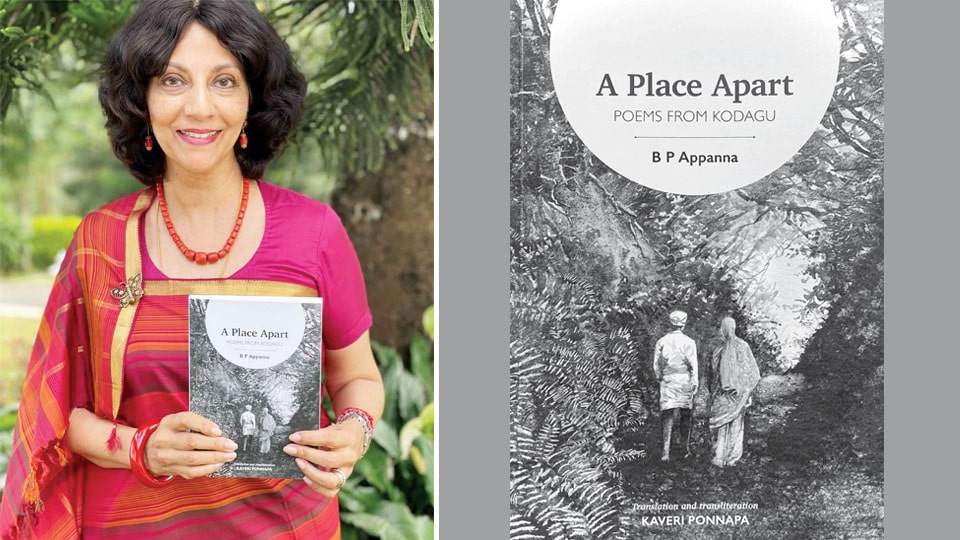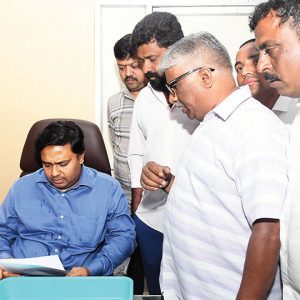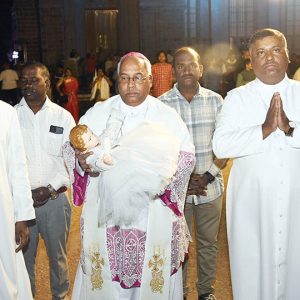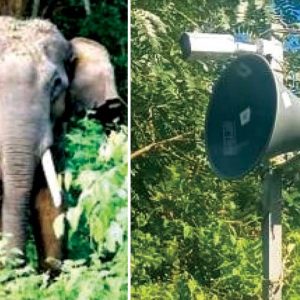
There are two basic forms of writing. One is prose and another verse. Prose is used in speaking and writing, distinct from verse. Prose follows a basic grammatical structure. In verse, poetry, there is compromise on grammar and even use of words and phrases. It is called poetic liberty. It follows a metrical structure.
With this, brief, succinct introduction to prose and verse, let me take on a book that landed on my desk for review and critique. The title of the book ‘A Place Apart – Poems From Kodagu,’ is alluring. It is originally written in Kodava language, a dialect, using Kannada script. The author, a junior college lecturer in Kodagu and a Kodava by race.
Much thought and labour seem to have gone into the writing and production of this book which carries both translation from Kodava language (written in Kannada script) into English and a transliteration where Roman script (english alphabets) is used to write the original poem, just as Kannada is used in the first part of the book that contains 21 poems.
The translation and transliteration are by Kaveri Ponnapa, the famous author of the book ‘The Vanishing Kodavas,’ a magnum opus of a pictorial, research-based book on Kodava people, their heritage, culture and a dismal future. She has a Master’s Degree in Social Anthropology from London. Naturally, the book acquires its importance because of the quality of the translation and transliteration that enables the reader to understand the sound and pronunciation of the spoken Kodava language.
She has indeed played the role of James Boswell to Dr. Samuel Johnson, the english lexicographer, so to say. Of course, Boswell made Johnson more famous by writing a masterpiece of a biography of the latter. Let it be. But here, the book of 21 selected Kodava poems written by B.P. Appanna and rendered into english by Kaveri Ponnapa, seems like serendipity for B.P. Appanna in getting a scholar of Kaveri Ponnapa’s stature to select his works for this book in english. For me those poems, described elsewhere as ‘deceptively simple poems’ did not seem to portray, as claimed, ‘the sense of dislocation and erosion of identity’ of Kodava people at all. This was the subject of Kaveri Ponnapa’s book ‘The Vanishing Kodavas.’ Here it is a poetic narration of Kodagu’s natural beauty — the deep verdant valley, the cloud kissing peaks of mountain ranges, dark forests, wildlife — almost like a prose sans soul, emotion, without igniting imagination in the reader.
Even so, this book will surely expose the author and the translator to the world outside Kodagu ignorant of Kodagu and Kodavas, a land and its people with distinctive geography and culture.
Kodava language, the dialect, has its vocabulary limited to that of the hunter-gatherer of the early ages related to agriculture, hunting and skirmishes. Naturally, a Kodava writer or a poet has to express himself using these limited vocabulary only. To overcome this handicap, perforce he has to borrow words from another language, here Kannada. Which is why, for example, in one poem where he should have used the pure Kodava word ‘Batte’ for road, he has used the word ‘Marga’, road in Kannada. May be for the purpose of alliteration in the stanza.
The transliteration section of the book is a testimony to Kaveri Ponnapa’s patience, tenacity and dedication to her work. It is a transliteration of the Kodava poems (written in Kannada script) using Roman, with a Kodava-english key to reading them. It offers an opportunity to those who do not know Kannada but know english to approach the sound and sense of Kodava language.
According to Kaveri Ponnapa, Romanisation like this will offer a practical opportunity to keep the language alive by reaching out to maximum number of speakers. Indeed, very true. As she further avers, “If we are looking at a way to taking endangered languages into the future, we need more speakers (and also readers).”
Here is her final word to those who tried to develop a new script for Kodava language, including the well-known Kodava author I.M. Muthanna. She says: “Languages like Kodava Takk do not need new scripts, they need more accessible scripts that open them up to a greater number of speakers or readers.”
We read in ‘Alice in Wonderland’, ‘What is a book without pictures’ and ‘A picture is worth a thousand words.’ Fortunately, for the reader of this book, there is much consolation and compensation when he sees those water-colour illustrations of people, places and artefacts of Kodagu the land, by artist Rupesh Nanaiah. Wish they were in colour. They speak about the subject of the book more eloquently than all those words.
I also wish Kaveri Ponnapa had chosen for this book some poems from other Kodava poets also.
There are some brilliant poems written by non-Kodavas about Kodagu and Kodavas like Panje Mangesh Rao, for example. A Kodava Sanyasi of Ramakrishna Ashram Swami Shambhavananda, I.M. Muthanna and others too have written about the people, flora and fauna of Kodagu that evoke nostalgia among the old and the diaspora.
Anyway, A Place Apart is a significant contribution to the Kodava community and its literature. The book must adorn every Kodava household and also the libraries of every Kodava Samaja. To purchase the book, contact: Dushyant on WhatsApp 99009-99994 or place your order at: https://www.coorg.com/kaveri.
e-mail: [email protected]








Recent Comments